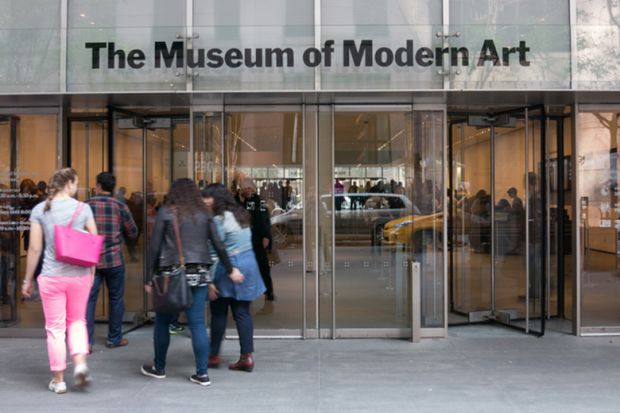When Mary Richardson slashed the Rokeby Venus in London’s National Gallery in 1913, she made a moving statement linking her act to the brutal treatment of suffragettes and, as Maria Bucur says, “holding the art world complicit in the unjust objectification of women”.
In this book, we learn that the Royal Academy was established in 1768 by a group of artists, including two women, but no other female artists were admitted until 1936; that Clara Driscoll, designer of the Tiffany lamps, was sacked in 1909 when she decided to marry; and that 88 per cent of the funding for the 1913 Armory Show in New York came from women. Focusing on the period 1890-1939, Bucur examines how Modernists “drove themes of sexuality and gender relations in radically new directions”.
This book grapples with the paradox that Modernism challenged gender polarisation and misogyny, but also reinforced and amplified them. Women were relegated to the role of muse. The radical political and aesthetic agendas of Vladimir Lenin and André Breton found little room for female emancipation and equality. It is, Bucur suggests, difficult to sustain the narrative that Modernism was fundamentally revolutionary when it had this blind spot. Despite four decades of feminist critiques, she argues that gendered aspects of Modernism are still marginalised, mocking reappraisals that merely “add women and stir”.
In a very wide-ranging discussion, she touches on artists such as Hannah Höch, Gustav Klimt and Frida Kahlo; on writers including Henrik Ibsen, Emma Goldman and Virginia Woolf; on the dancer Josephine Baker. She considers a number of iconic films (Metropolis, The Blue Light, The Triumph of the Will). She brings lesser-known Eastern European artists, including Jaroslav Hašek, Cecilia Cutescu-Storck and Irena Krzywicka, into her account. Yet there are also some odd omissions: no mention of female Surrealists Dorothea Tanning and Meret Oppenheim; no discussion of H. G. Wells’ “New Women”, James Joyce, D. H. Lawrence or Dorothy Richardson, for example.
Bucur’s account of the motivations of female patrons such as Mabel Dodge, Cristobel and Ethel Cone and Katherine Dreier is fascinating. In addition to examining Modernist art and literature, she contemplates aspects of wider culture, including eugenics and birth control. She discusses Marie Stopes; Magnus Hirschfeld’s pioneering work advocating for the gay community; and Aleksandra Kollontai, who headed Zhenotdel, the women’s section of the Communist Party in Russia.
Gendering Modernism outlines how ideas about female sexuality and agency were often seen as a threat to notions of masculinity. Bucur shows how Modernist attempts to refashion sexual norms, engage with the crisis of masculinity and set out new possibilities for women to engage in social and political activities laid vital foundations for later developments in all these areas. Yet she writes that to “try and speak to the relationship between modernism and gender in a substantial manner seems like an overwhelming task”, and therein lies the issue with this book. Since its ambitions are very broad, Bucur can do no more than touch on everything. Her broad-stroke synthesis nonetheless remains a useful introduction, contributing to the still very necessary task of keeping feminist issues visible.
Tracey Warr was formerly senior lecturer in fine art, Oxford Brookes University, and is the co-editor of Remote Performances in Nature and Architecture (2015).
Gendering Modernism: A Historical Reappraisal of the Canon
By Maria Bucur
Bloomsbury
168pp, £55.00 and £17.99
ISBN 9781350026247 and 6254
Published 21 September 2017




